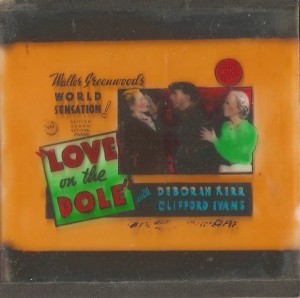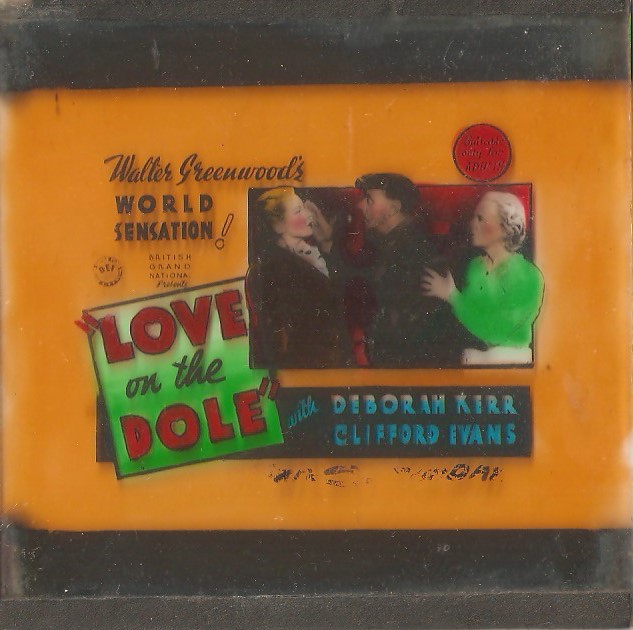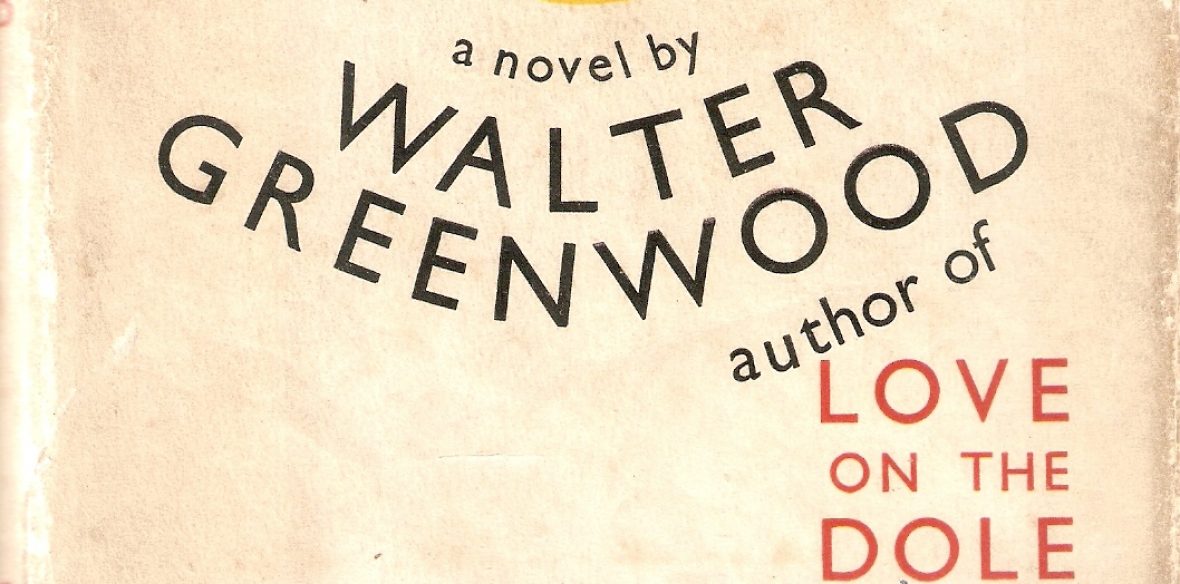I have just bought via e-Bay UK what is probably the most fragile thing I have ever had posted to me, let alone from Australia. It is a cinema advert on a glass slide for the film of Love on the Dole, which was a big hit in Australia after (though partly also because of) a difficult start. The difficult start was that the film was banned by Cresswell O’Reilly, the Senior Commonwealth Film Censor, on the arrival in Sydney of copies for distribution on 25th September 1942. He did not have to make his reasons public and did not do so. It was, however, a peculiarity of the Australian film censorship system that film distribution companies could appeal against the Senior Commonwealth Film Censor’s view to the Chief Censor, Professor Wallace, who was based in Melbourne. This was a liberal element lacking in the British system, where film scenarios had in effect to be submitted before filming began, and no appeals could be made against the decision of the BBFC (the British Board of Film Censors), though amended scenarios could be resubmitted. Distribution companies had learnt from experience in Australia that Cresswell O’Reilly was more conservative in his decisions, and that Professor Wallace was more liberal. The Censorship Appeals Board ruled very quickly, on 2nd October, to accept the appeal and to license Love on the Dole for adult exhibition only. It then became a big hit being exhibited continuously in pretty much every town and city in Australia from 1942 until 1946. (1) There were no doubt many reasons for this success, but the censorship itself contributed, since for the next four years many advertisements for the film carried the words ‘for adults only’ and/or the crossed out label ‘banned’, even though it had been banned in Australia for only six days. In many ways, the Senior Commonwealth Censor had done the film a great favour. To compare the film’s treatment by the British film censorship system, see: The Film of Love on the Dole (1941)
Example of the Australian film poster for Love on the Dole (copied from the IMDB entry for the film because I can find no other source to illustrate this point about the posters)

Glass slides for projecting images were known as far back as the seventeenth century, when they were hand-painted, and these developed into the lantern slides which were much used for education and entertainment in the nineteenth century. The key innovation which made it possible to mass-produce these slides, and use them widely, was the invention of affordable printing techniques suitable for glass. (2) When film and cinemas had become established, this older technology was still useful for certain kinds of purpose, including projecting announcements about expected behaviour in the ‘picture-house’, and the advertising of goods and upcoming film programmes.
This Love on the Dole example is one of the last sorts of slide. It is made up of two squares of glass, one with the colour design printed on it, the other a protective cover, and the two plates held together, as was usual, with black tape round two edges. It measures three and a quarter inches (just over 8 centimetres) on each side. The slide uses the same font for the title as some Australian Love on the Dole film posters, with the (not wholly appropriate?) heart-shaped centre to the letter O in both title words. It also has the words ‘Suitable for Adults Only’ in a red circle, and an image from the film which supports this – the scene near the end where Mr Hardcastle hits Sally and calls her a ‘slut’, when she returns to the family home in Hanky Park to collect a few possessions, before going to be Sam Grundy’s ‘house-keeper’ in Wales. Part of this scene is also featured on the film poster above, though contrasted with an image from the more romantic strand in the film, when Larry and Sally go rambling on the moors above Hanky Park. The film is called a ‘World Sensation’, suggesting both the success of the film and its controversial content. A small circle displays the letters BEF, referring to the film’s overseas distributor, British Empire Films. At the bottom is some lettering which is partly erased, but ends ‘day’ and presumably referred to screening details.

Above is the slide at just under its actual size, while below is the slide at a larger scale to give a sense of how it might have looked when projected (scanned by the author from the slide in his own collection).

Glass cinema slides are collectors’ items and – as a look at e-bay will tell you – quite large numbers of examples of these fragile media are still intact, but I don’t know how many for Love on the Dole have survived. Perhaps this is the only one? Anyway, I shall do my best to preserve this example for posterity.
NOTES
Note 1. See Chris Hopkins, Walter Greenwood’s Love on the Dole: Novel, Play, Film, Liverpool University Press, Liverpool, 2018, pp. 178-180 for further detail.
Note 2. Nearly all my knowledge of the history of glass slides is derived from the excellent short essays on the subject on the National Film and Sound Archive of Australia, which has preserved a large collection of such slides (though they do not seem to have the Love on the Dole one). See: https://www.nfsa.gov.au/latest/glass-cinema-slides-1
